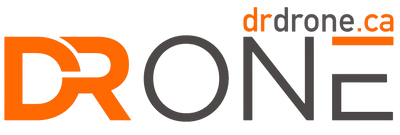OVERVIEW
The PRS-M4DT is a drone parachute system designed for the DJI Dock 3, compatible with the DJI M4D and M4TD. It integrates seamlessly into enterprise drone operations, offering a Parachute Recovery System (PRS) that supports regulatory compliance for flights over people. The PRS-M4DT enables safe and legal operations in accordance with major aviation authorities, including:
-
FAA's Operations Over People (Category-compliant)
-
Transport Canada's Over People regulations
-
EASA’s MOC 2512
-
Australia’s Civil Aviation Safety Authority (CASA)
-
Countries adopting JARUS SORA guidelines with M2 mitigation
The PRS-M4DTEX is an enhanced version combining a PRS with a Flight Termination System (FTS), designed to meet both MOC 2511 and MOC 2512 under EASA regulations. This model includes an independent FTS that triggers termination upon geofence breaches, enabling C5 and C6 classification in Europe.
The FTS-M4DTEX is a standalone FTS solution for meeting EASA MOC 2511 requirements. Without a parachute, it focuses on minimizing air risk, tailored for scenarios where Enhanced Containment or C6 designation is required.
KEY FEATURES
-
Rapid deployment in under 0.5 seconds
-
Plug-and-play FTS with optional deployment at 0 meters/feet
-
Manual deployment via PSDK and automatic geofence-triggered activation
-
Complies with:
-
ASTM F3322-22 (Expected Q2 2025)
-
EASA MOC 2511 (Expected Q2 2025)
-
EASA MOC 2512 (Expected Q2 2025)
-
Additional third-party documentation for Civil Aviation Authorities
COMPLETE SYSTEM INCLUDES
-
One Parachute Pod™
-
Electronic control module
-
Flight Termination System (PSDK-based)
-
Flight Termination System (geofence-based – included with PRS-M4DTEX & FTS-M4DTEX)
-
Autonomous trigger mechanism
-
Mounting bracket
-
Electronic module batteries
-
One-year warranty
-
Compliance documentation for CAA, ASTM F3322-22, EASA MOC 2511, and MOC 2512 (expected Q2 2025)
Note: Performance expectations are subject to variation based on data collection and analysis methods required by different Civil Aviation Authorities.






